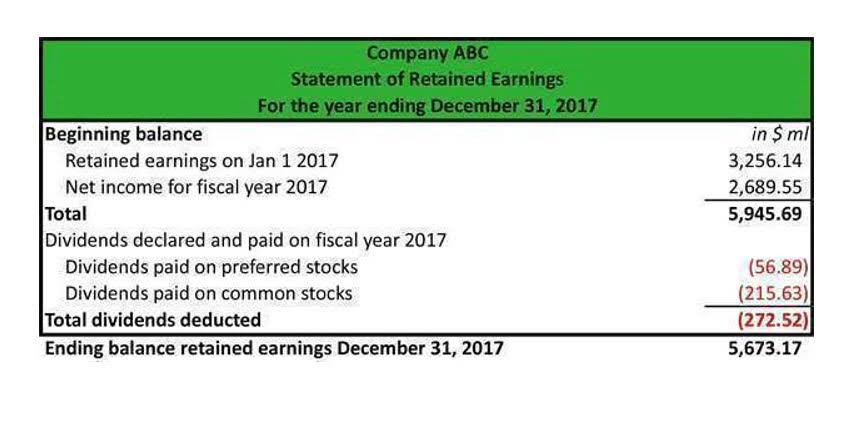
This calculated liability is distinct from the final amount a taxpayer must remit to the Treasury or the refund they receive. Penalty relief may be available if it’s your first tax penalty or if your ability to pay or file on time was impacted by a serious illness, natural disaster, or other disruptive event. If you calculate that you owe money after preparing your tax return, be sure to pay the outstanding amount by the April 15 deadline or you will likely face late payment penalties. If you can’t afford to pay it in full, explore the IRS’ payment plans.
What Is Tax Liability?
- This figure provides a more accurate picture of the overall tax burden than the marginal rate alone.
- Deferred tax liability is an important concept for both businesses and individuals when it comes to financial planning and tax management.
- Contributions to retirement accounts like a 401(k) or IRA are often tax-deductible, lowering taxable income and thus income tax liability.
- This can further complicate your tax situation, requiring careful planning and management to ensure compliance and avoid penalties.
- A Roth IRA can lower your total tax payments if you’re sure you’ll be in a higher tax bracket after you retire and begin taking withdrawals, because those withdrawals will be tax free.
The amount is collectively known as the business’s sales tax liability. All businesses are mandated to pay the taxes in a timely manner to the respective authorities. Businesses handle payroll taxes by deducting federal, state, and local income taxes directly from employees’ wages. They also handle contributions to Social Security and Medicare under the Federal Insurance Contributions Act (FICA)3 and pay state and federal unemployment taxes. Contributing to a 401(k) or traditional IRA can reduce your taxable income and prepare you for your financial future.

Take Advantage of Tax Deductions and Credits
- The U.S. tax system is progressive, meaning the government taxes different portions of your income at different rates that become increasingly higher as the total amount of income rises.
- This is incorrect; each tax rate applies only to income in that bracket, after deductions have been applied.
- Your tax liability would be the total amount your employer withheld from your payroll to pay taxes minus the tax refund amount.
- It can be owed to a state or local tax authority as well as to the federal government.
- One effective strategy for managing your tax liabilities is understanding the methods to reduce them legally.
- Estimated tax payments are quarterly tax payments made by those who don’t have enough tax withheld from regular income, such as freelancers or self-employed individuals.
In other words, your tax liability is any amount that you owe a taxing authority, such as the Internal Revenue Service. It is the amount of money that you owe to the IRS or another taxing authority when you finish preparing your tax return. Hence, the total tax liability formula and calculation would include any balances still owed from previous years. Just like different income tax brackets, there are different brackets or thresholds for capital gains that determine how much tax you’ll pay. Simply put, tax liability refers to the amount of tax owed by an individual, business, or other entity. In the U.S., this money goes to the Internal Revenue Service (IRS).
Deferred Tax Liabilities vs Deferred Tax Assets

Conversely, a corporation is considered a separate tax entity and is taxed at a corporate rate, separate from its owners. With tax planning, individual taxpayers can bring down income tax liability to as low as zero. Taxpayers can claim deductions for medical expenses (qualified) incurred during the relevant tax period. Calculating your business’s tax liability may seem complex, but https://www.bookstime.com/ breaking it down into clear, manageable steps can make the process straightforward. From identifying your total income to applying deductions, rates, and credits, each step plays a crucial role in determining how much tax your business owes.

But one thing business tax liabilities have in common with individual tax liabilities is that they are both due in the next year. Tax credits directly reduce the amount of tax owed, while exemptions reduce the taxable income itself. If applicable, subtract any credits or exemptions from the calculated tax liability. Liabilities are financial obligations or debts that a business or individual owes to others. They represent claims against the company’s assets, and they must be settled over time through the transfer of money, goods, or services. Liabilities can be short-term (due within a year) or long-term (due after more than a year), such as loans, accounts payable, or mortgages.
Therefore, using the tax liability equation (10% of $10,200), your income tax liability would be $1,020. Assuming you were to earn a net taxable income of $95,000, it means you would be pushed up into a 24% tax bracket on the portion of your income that exceeds $89,075. Tax liability is determined by subtracting your standard deduction from your taxable income and referring to the appropriate IRS tax brackets for the taxable period/year.

Deferred tax liability is an important concept for both businesses and individuals when it comes to financial planning and tax management. Understanding and calculating your tax liability doesn’t have to be overwhelming. Start by determining your income and business structure, then apply how to calculate tax liabilities the correct rates, deductions, and credits. Ensure you stay on top of estimated payments, employment taxes, and filing deadlines to comply with IRS requirements. It is the future tax payment a company is expected to pay to the tax authorities.

State tax credits can significantly impact your total tax liability. These credits are typically offered to encourage certain behaviors, such as investing in renewable energy or creating jobs within the state. Understanding which credits are available and how you can qualify for them is integral to minimizing your tax liability. A local tax professional Liability Accounts can assist in identifying and applying for these credits, ensuring you take full advantage of the tax incentives offered by your state.
- It’s advisable to consult with tax professionals to explore all available options and implement the most effective tax-saving strategies tailored to individual financial situations.
- Fortunately, students and parents have several ways to lower their tax liabilities through education-related deductions and credits.
- Think of tax liability as the scoreboard, and your refund or balance due as the final settlement after the game.
- This example does not include other taxes, credits, or adjustments.
- It’s available to most taxpayers and helps lower the amount of income subject to tax without requiring you to itemize specific deductions.
- Regardless of the method chosen, ensure that all records are easily accessible and well-organized for quick reference during tax season or in case of audits.
Common deductions:
The social security tax is set at 6.2% of an employee’s wages, and is capped at an inflation-adjusted amount of a person’s wages (which increases each year). For example, if an employee is being paid a salary of $100,000 per year, the employer will have to pay its share of the social security tax, which is $6,200. In addition, the employer must withhold the same amount from the employee’s pay, and then remit the combined total of $12,400 to the government. When you sell a property, an asset, or any other investment and make a profit, you’ll need to pay taxes on those gains. However, if you sell at a loss, you won’t owe taxes, but you will need to report it as a capital loss.
0 Comments